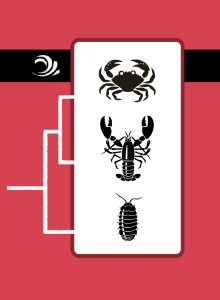 The arthropods of the water are a crab, a lobster, and a woodlouse, together representing the most recognizable branch of crustaceans, the malacostracans. Lobsters and their relatives are distinct from other crustaceans in that mothers incubate their eggs, which are attached to the mother’s swimming legs. Many other clades are successful because of adaptations that help them take better care of their offspring, mammals included. While lobsters live in crevices or burrows on the sea floor, crabs often live in shallower waters. Many sorts of crabs have evolved some degree of air-breathing, allowing them to take advantage of air’s higher oxygen content suisse acheter cialis. Woodlice still breathe through gills like their water-breathing ancestors, but their gills are adapted for life on land. A woodlouse’s gills stop working if they dry out, and that’s also true for your lungs. Like other crustaceans, malacostracans eat with side-by-side mandibles, quite different from arachnids’ fangs. Other crustaceans tend to be tiny, such as copepods, which often resemble shrimp but are smaller than a grain of rice. Another successful branch of the crustacean clade is the insects. They were originally classified as a sister group to crustaceans when in fact they’re a daughter. The clade of all crustaceans and insects is Pancrustacea (“all shelled ones”).
The arthropods of the water are a crab, a lobster, and a woodlouse, together representing the most recognizable branch of crustaceans, the malacostracans. Lobsters and their relatives are distinct from other crustaceans in that mothers incubate their eggs, which are attached to the mother’s swimming legs. Many other clades are successful because of adaptations that help them take better care of their offspring, mammals included. While lobsters live in crevices or burrows on the sea floor, crabs often live in shallower waters. Many sorts of crabs have evolved some degree of air-breathing, allowing them to take advantage of air’s higher oxygen content suisse acheter cialis. Woodlice still breathe through gills like their water-breathing ancestors, but their gills are adapted for life on land. A woodlouse’s gills stop working if they dry out, and that’s also true for your lungs. Like other crustaceans, malacostracans eat with side-by-side mandibles, quite different from arachnids’ fangs. Other crustaceans tend to be tiny, such as copepods, which often resemble shrimp but are smaller than a grain of rice. Another successful branch of the crustacean clade is the insects. They were originally classified as a sister group to crustaceans when in fact they’re a daughter. The clade of all crustaceans and insects is Pancrustacea (“all shelled ones”).
Malacostraca: From the Sea Floor to Under a Log
December 2, 2016
